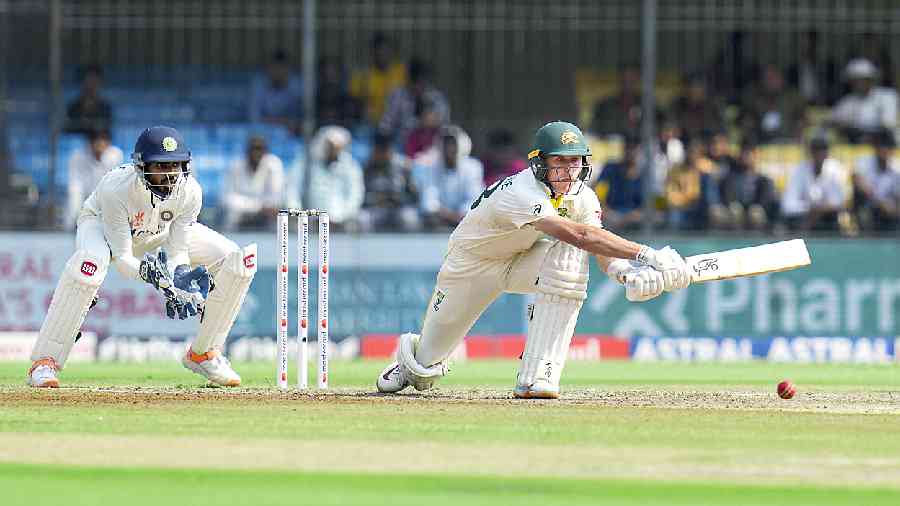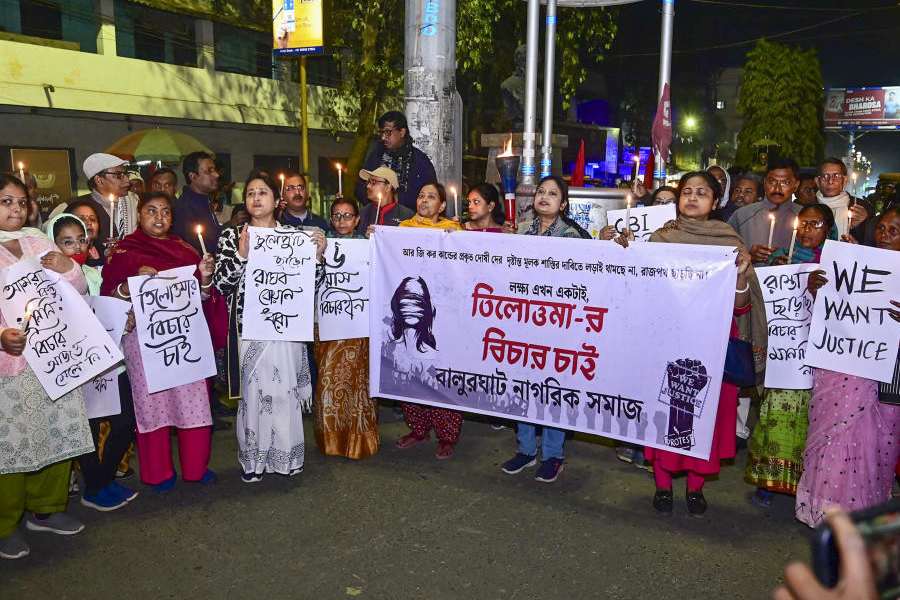Watching Nathan Lyon scythe through India’s batting order in the third Test in Indore, I thought of that other fine touring off-spinner, Fred Titmus, taking five wickets against us in Madras in 1964 and realised with an uneasy start that I had been following touring teams for nearly sixty years now.
Off-spinners aside, the two tours were chalk and cheese. The five Tests that made up the ’64 tour were all drawn, thanks to flat wickets and toothless bowling attacks. In the current tour, pushing the match into the fourth day is proving impossible.
Unlike Pat Cummins’ Australians, M.J.K. Smith’s side was a second-string team led by a locum captain because England’s best weren’t interested in touring India. Ted Dexter chose to skip the tour as did England’s great fast-bowling duo, Fred Trueman and Brian Statham. The fast bowling was done by county workhorses like John Price and David Larter. There were a trio of first-rate batsmen — Colin Cowdrey, John Edrich and Ken Barrington — but they weren’t available for all five Tests and, for the most part, it was an MCC second eleven doing the Indian Board a favour by just being there.
The galling thing was that this team of makeweights was good enough for India’s best. India might have achieved Test-playing status thirty years previously but the ’64 side consisted of a decent batting line-up — Mansur Ali Khan Pataudi, M.L. Jaisimha, Dilip Sardesai, Vijay Manjrekar — and no bowling to speak of.
There were the two left-arm spinners, Bapu Nadkarni and Salim Durani, who played as all-rounders rather than specialist bowlers. Nadkarni was an extraordinarily economical bowler but not a penetrative one and Durani was better known for his flamboyance as a batsman than his guile as a bowler (though he did make a crucial bowling contribution to India’s landmark victory in the West Indies in 1971). Chandu Borde and Baloo Gupte did the leg-spin bowling, but they were at the end of their careers and well past their best. Ramakant Desai, all 5’4” of him, was our fastest bowler. His fellow opening bowler was India’s opening batsman, Jaisimha.
Which is why watching Mohammed Siraj, Mohammed Shami and Umesh Yadav making stumps cartwheel is peculiarly satisfying for the older Indian fan. I remember an English tour where Budhi Kunderan, playing as a specialist batsman, was nominated to open the bowling. The story goes that an English journalist asked, “What does he bowl?” “I don’t know,” said the captain. “He’ll have to bowl to find out.”
When you’ve been raised on a diet of military medium opening bowlers like Abid Ali, Madan Lal and Eknath Solkar, backed up by irregular shine-removers like Jaisimha, Pataudi and Sunil Gavaskar, the sight of Jasprit Bumrah terrifying a tailender like Jimmy Anderson with short balls is a source of low but powerful satisfaction.
Indian Test cricket today is better in nearly every way than it was sixty years ago. The players are fitter, better paid and probably just better than their predecessors. I like to think that the great B.S. Chandrasekhar, who made his debut in the ’64 series, would make it to an all-time Indian XI but I suspect the weight of wickets racked up by Anil Kumble and a batting average of under 5 might sink his case. Similarly, it’s hard for someone my age to concede that India (or indeed the world) has ever produced a better left-arm spinner than Bishan Singh Bedi, but it’s hard to gainsay Ravindra Jadeja’s strike rate and bowling average and that’s before we even get to the fact that he is arguably the best all-round cricketer India has produced. (On the other hand, there’s nothing in modern cricket quite like the sight of Bedi tiptoeing up off a three-step run-up to bowl left arm round the wicket and giving it air. Winning isn’t everything.)
Despite the trolls on social media, we even have a better cricketing public. They have watched the game played close-up thanks to the magic of modern television coverage. There was a time when Indian Test matches were telecast only from one end of the ground so every other over, we watched the batsman play with his back to us. Till the 1980s, there were no action replays. The presence of ex-players in the box has made commentary better. The likes of Ravi Shastri, Sunil Gavaskar and Sanjay Manjrekar can be repetitive and irritating but as anyone who has tried to make sense of a Test via the effusions of the Maharajkumar of Vizianagaram or the nervous volubility of non-playing commentators of the Sixties and Seventies, will testify, practitioners generally make better explainers.
Fans still want their favourites in the team and high-minded students of the game might find their partisanship toxic and irrational but it’s hard to imagine spectators at large watching the game with Olympian even-handedness. I, like most fans, am more invested in some cricketers than others. How could it be otherwise, unless we were Vulcans? That said, the passions of fandom are restrained and shaped by the information about the game that is easily available online.
Apart from television coverage,the development that has most transformed the life of the cricket fan for the better is the encyclopaedic cricket website. Every follower of the game can visit Cricinfo or some clone thereof and find literally everything he/ she wants to know about a Test or a series or a cricketing career. The careless flourish or rash generalisation about a player or a team in private conversation or published journalism is liable to be tested against the cricketing archive. What was once the prerogative of cricket’s scorers and statisticians is now available via interfaces like Statsguru to anyone with an online connection. In a basic way, cricket’s following is becoming numerate simply because the numbers are so accessible.
We still need Mike Marqusee and Ramachandra Guha and C.L.R. James to write the great contextualising histories that explain the evolution of the game and its relationship with the world it inhabits. Information needs to be organised into explanatory narratives. Thanks to the painstaking collation of data by Cricinfo and its imitators and the ingenious interfaces that make it available to ordinary followers of the game, future historians of cricket will have less trouble getting their facts right and future fans will be more literate about the game than we were when M.J.K. Smith’s mediocre men toured India in 1964.
mukulkesavan@hotmail.com











